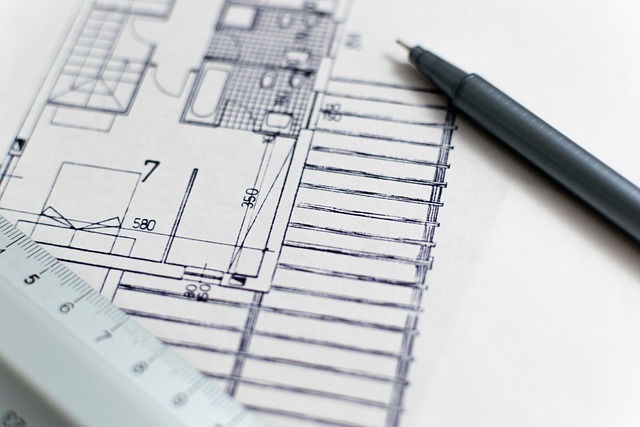Architects are frequently employed in both commercial and residential construction projects. Sometimes their failures can result in significant losses for the property owner.
If an architect fails to provide competent advice and you incur a financial loss as a result, you may be able to sue the architect for professional negligence. In this article, Professional Negligence Architect, we consider the process and mechanism involved.
Please click here to find out more about our Commercial Litigation services.
Free initial telephone discussion
For a free initial discussion with a member of our New Enquiries Team, get in touch with us today. We are experienced in dealing with all the legal aspects of professional negligence claims against architects. Once instructed, we will review your situation and discuss the options open to you in a clear and approachable manner. Early expert legal assistance can help ensure you are on the best possible footing from the start and can help you avoid the stress of dealing with these issues on your own. Simply call us on 0345 901 0445 or click here to make a free enquiry and a member of the team will get back to you.
What is professional negligence?
In general, professional negligence occurs when a professional fails to fulfil his or her duties to the required standard. A claim may be founded on any of the following:
- Breach of an express or implied contractual term
- Breach of the duty of care owed in negligence, a tort
- Breach of fiduciary duty
- Breach of a legal obligation
Depending on the circumstances, these claims may be initiated by the professional’s client, but third parties may also be able to sue the professional.
Professional negligence is a component of negligence under English tort law. This is a common law legal system, which is a branch of the law that imposes civil liability for obligation breaches.
Professional negligence occurs when a professional causes loss to another person as a direct result of their own neglect or recklessness, or when a substandard service results in loss or damage.
How can I prove a professional negligence compensation claim?
If a duty of care and skill was owed, your case must establish that an error was made that no reasonable member of the profession would have made under the same circumstances.
To support your claim, you will need to provide evidence from a specialist in the field in which the professional failed you. This expert testimony is typically a report compiled by another professional, and it seeks to emphasise the correct advice and/or conduct that should have been followed. The expert’s testimony will also attempt to clarify what, in the expert’s opinion, a reasonable professional would have done in the same circumstances.
The measure of skill and care in a contractual claim differs slightly from that of a tort claim, in that the case seeks to establish what would be considered reasonable skill and care. In contrast, the standard for a tort claim is an objective test that determines what a “reasonable man” would expect.
Examples of architect negligence
- Failure to acquire any or the proper planning permissions (for a development, listed building consent, conservation area consent, or building regulations compliance)
- Ineffectively managing a construction project, such as by providing ineffectual on-site supervision during construction
- Failing to effectively supervise a construction project
- Outsourcing a task to a third-party contractor who does not complete the task with the necessary care and expertise
- Providing inaccurate property plans or designs
Can you claim damages?
If you have determined that your architect has breached their duty of care and this has resulted in a loss for you, you may be able to file a claim for damages against them or their insurer.
However, you should not overestimate the quantity of compensation you can claim. The purpose of damages is not compensation. Instead, they are intended to put you in the position you would have been in if the architect had not been negligent, not to improve your position relative to what it would have been otherwise.
If you believe you have a claim, you should seek legal advice and document the legal basis for your claim as well as the losses you’ve sustained. This can then be sent to the architect, who will either accept your claim or respond with a letter indicating whether they intend to defend the claim and their legal basis for doing so.
In the majority of instances, claims are settled out of court. If this is unavoidable, your solicitor should provide you with additional information on what to anticipate.
Negligence vs professional negligence – what’s the difference?
Theoretically, anyone who disregards the repercussions of their actions can be negligent. However, when a professional is negligent, they fail to exercise a reasonable level of care or skill.
Employers anticipate a higher standard of care from professionals due to their specialised skills and knowledge. Failure to meet reasonable standards may comprise a breach of the duty of care owed to the client by the professional.
Various factors will determine whether a claim meets the requirements for professional negligence. The claimant must first demonstrate that the professional owed them a duty of care. After establishing that a duty of care exists, the claimant must demonstrate that the professional breached this duty through their actions or inactions. Additionally, the claimant must demonstrate that they suffered damage or loss as a result of (“causation”) the breach and that they would not have suffered the same had the breach not occurred.
Is there a deadline for filing a claim?
There are strict deadlines for initiating a lawsuit against a negligent architect.
Generally, the statute of limitations for prosecuting a professional in tort is six years from the date the cause of action arose and/or the loss was sustained (section 2, Limitation Act of 1980).
The statute of limitations for suing a professional for contract violation is six years from the date of the breach (section 5, Limitation Act of 1980).
Alternately, section 14 of the Limitation Act of 1980 provides that, in certain circumstances, a claim may be brought within three years of the date on which the claimant had both the knowledge and the right to bring a claim for damages in relation to the relevant damage.
In a claim with multiple distinct limitation dates, limitation can therefore be a complex issue. As soon as you realise that you may have a claim against a potentially negligent architect, you must seek legal advice.
How we can help
We have a proven track record of dealing with professional negligence claims against architects. We will guide you through the process and ensure all checks are carried out swiftly and efficiently. We firmly believe that with the right solicitors by your side, the entire process will seem more manageable and far less daunting.
Please click here to find out more about our Commercial Litigation services.
How to contact our Commercial Litigation solicitors
It is important for you to be well informed about the issues and obstacles you are facing. Expert legal support is crucial in terms of reducing risk, saving you money and ensuring you achieve a positive outcome.
To speak to our Commercial Litigation solicitors today, simply call us on 0345 901 0445, or allow a member of the team to get back to you by filling in our online enquiry form. We are well known across the country and can assist wherever you are based. We also have offices based in Cheshire and London.
Disclaimer: This article provides general information only and does not constitute legal advice on any individual circumstances.



